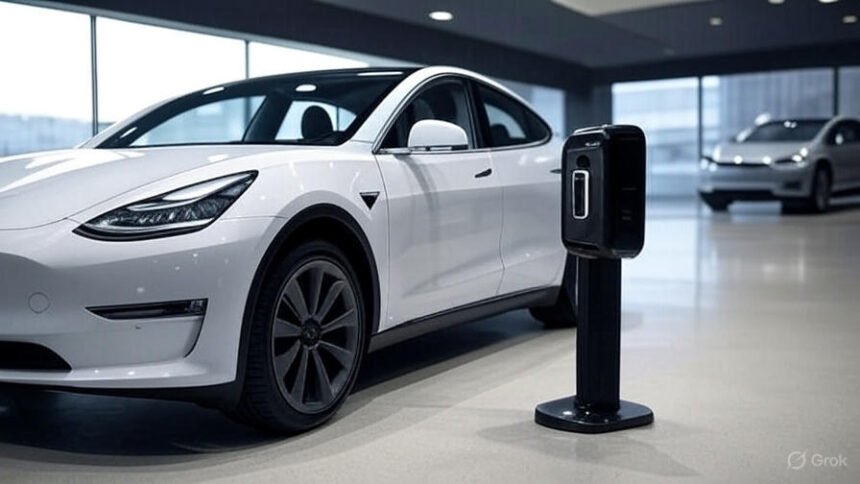V4 Superchargers in China: Is It A Wise Move?
Tesla announced the launch of V4 superchargers in China. The chargers are now operational in specific locations, including Gansu, Shanghai, Zhejiang, and Chongqing, with over 2,100 Supercharger stations.
This is a significant move from Tesla, demonstrating its long-term commitment to China over the past seven years.
- 2019 – The first “Made-in-China”.
- 2020–2021 – The rapid Production Growth and the Pandemic Resilience.
- 2021–2023 – More charging Infrastructure & Open Network
- 2024 – The Record-breaking Sales Amid Rising Local Pressure
- 2025 – V4 Launch, Model Refresh & Struggling Sales
Tesla marks the comeback from declining sales with v4 superchargers.
How are V4 Superchargers better than earlier versions?
Tesla’s V4 Supercharger represents its most advanced fast-charging technology yet.
Built around a new V4 Cabinet, these stations can deliver up to 500 kW of peak power for passenger vehicles and scale up to 1.2 MW for heavy-duty charging, such as the Tesla Semi with a flexible voltage architecture (covering 400–1,000KW), V4 supports broad compatibility across modern EV platforms modular design and cost-effective manufacturing—reportedly under $40,000 per stall. Tesla aims to scale deployment rapidly.
How Tesla compares V4 to its rivals
- At 500 kW, V4 delivers approximately 168 miles (270 km) in 15 minutes—a rapid charge, but still slower than some domestic competitors.
- Tesla’s efficient deployment ($ 40,000 per stall) creates a significant edge in scalability.
- Its open network converts Superchargers into multi-brand EV stations.
- Global Experience: Tesla’s mature network—70,000+ stalls globally—offers seamless integration and standardized software tools like route planning.
Supercharger Upgrades Driven by Local Competition
The evolution of Tesla’s Supercharger technology is a direct response to the fast-moving and highly competitive EV market in China.
As local automakers like BYD, Xpeng, and NIO roll out faster, more powerful charging solutions—some reaching Megawatt levels—Tesla has steadily upgraded its infrastructure to stay relevant.
The shift from V2 to V3, and now to the high-capacity V4 Superchargers, reflects Tesla’s push to match domestic innovations while maintaining its global charging standards with features like 500 kW peak power, longer cables, and compatibility with non-Tesla vehicles, the V4 rollout isn’t just about speed it’s about staying ahead in a market where convenience, efficiency, and accessibility increasingly define brand loyalty.
What are the following milestones for Tesla?
- Tesla is likely to focus on expanding V4 production to major cities like Beijing and Guangzhou.
- Scaling up the V4 Cabinet production in Shanghai considerably—building on a factory capacity of 10,000+ V3 units per year.
- Continue rolling out payment and payment solutions, as well as universal compatibility, to simplify access for non-Tesla drivers.
Tesla’s introduction of new V4 Superchargers is not just a new step but a revolutionary combination of speed, Cost efficiency, and the network.
Tesla is positioning its network as a public good that can support China’s EV ecosystem at scale.
Tesla’s primary focus is on EV drivers to benefit from faster and more versatile charging solutions.
It’s not just about rapid charging—it’s about who builds the most accessible, efficient, and scalable network.






